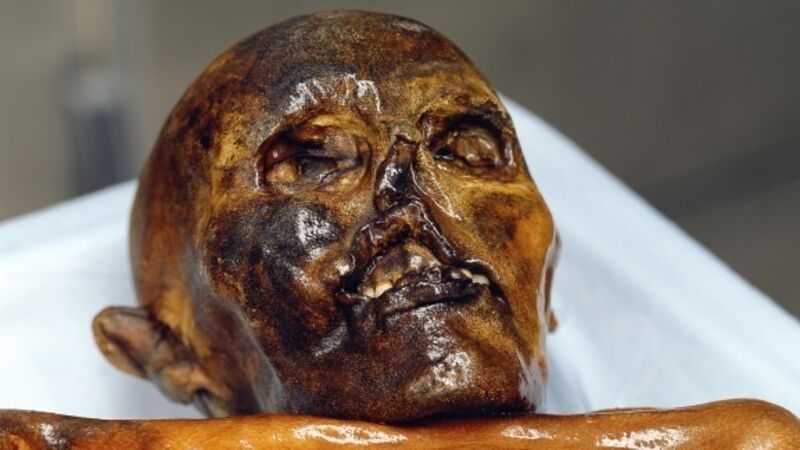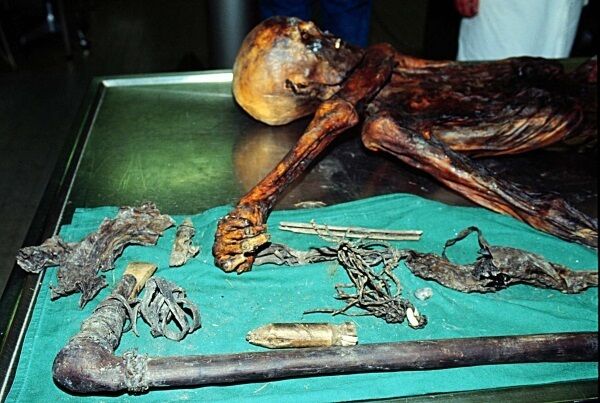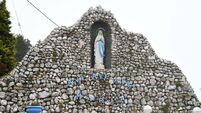This iceman's voice was reconstructed and heard again 5,000 years after his death

To celebrate the occasion, experts met at Bolzano, Italy, home of the South Tyrol Museum of Archaeology, where Ötzi’s remains are displayed. The highlight of the International Mummy Congress was a vocal contribution from beyond the grave by the iceman himself.
Tourists Helmut and Erika Simon, walking off piste at an altitude of 3,200m in the Ötzal Alps, came upon the body of a man entombed in ice 93m inside the Italian border with Austria. Thinking they had found the remains of a mountaineer, they alerted the police. The cadaver was taken to Innsbruck for examination.
Archaeologist Konrad Spindler, who studied items found with the body, concluded that Ötzi had lived about 4,000 years ago. The consensus now is that the remains are about 5,300 years old, making them Europe’s oldest natural mummy. The iceman was 1.65m tall and weighed around 50kg (5ft5in and 8 stone in antediluvian Imperial measures).

The South Tyroleans claimed property rights over the find but allowed Innsbruck University to carry out the scientific examinations. Pollen and dust grain analysis revealed that Ötzi had spent his childhood near Bolzano, moving 50km northwards later in life. Strong leg and pelvic bones suggest that he lived in hilly terrain. Fruit, bran, goats-meat and venison featured in his diet. The teeth had cavities and intestinal worms lived in the gut.
Tattoo-like marks on the torso wrists and legs may have resulted from acupuncture-type treatments.
It was thought, at first, that Ötzi had died of exposure while trying to cross the mountains. Then, analysis of gut contents showed that he had eaten two meals, one of them less than two hours prior to his death. Ritually slaughtered individuals have been found in Ireland England and Denmark. Had Ötzi suffered a similar fate to our bog people?
The debate on the cause of his death continued until 2001 when X-rays revealed an arrowhead lodged in the iceman’s left shoulder; a hole in his cloak showed where the arrow had entered.
Then evidence of a blow to the head was discovered. Blood of at least one other individual was found on the clothing. Ötzi had died violently.
The finders had been right to call the police; this was a murder case.

The iceman has kept specialists from a host of disciplines occupied for 25 years and the revelations continue. Now, Italian researchers, using X-rays, CT scans, and special software, have reconstructed the sound of his voice. A recording played at the Bolzano Congress can be heard on the web. It’s no Stone Age equivalent of the Gettysburg Address but a gravelly low-pitched rendering of five vowels. Still, what a remarkable achievement to have created the best possible approximation to the voice of a man dead for over 5,000 years? Some crucial information, it’s admitted, is missing; the effects of lost soft tissue couldn’t be factored in and the vocal chord data are incomplete.
The events which followed the discovery of Tutankhamun’s tomb in 1922 prompted tabloid speculation that there’s also an “Ötzi curse”. In 2004, Helmut Simon died from a fall while hiking near the spot where he discovered the iceman. The archaeologist Konrad Spindler passed away the same year. A journalist who filmed the iceman’s removal, died of a brain tumour at the age of 47. The leader of a research team was killed in a car-crash on his way to give a lecture on Ötzi. A mountaineer who had helped in the research was swept away by an avalanche. Archaeologist Tom Loy was found dead two weeks after completing a book on the iceman. He didn’t believe in the Curse of the Pharaohs. ‘It’s just superstition. People die’, he is reported as saying.
www.gizmodo.com/what-otzi-the-iceman-sounded-like










